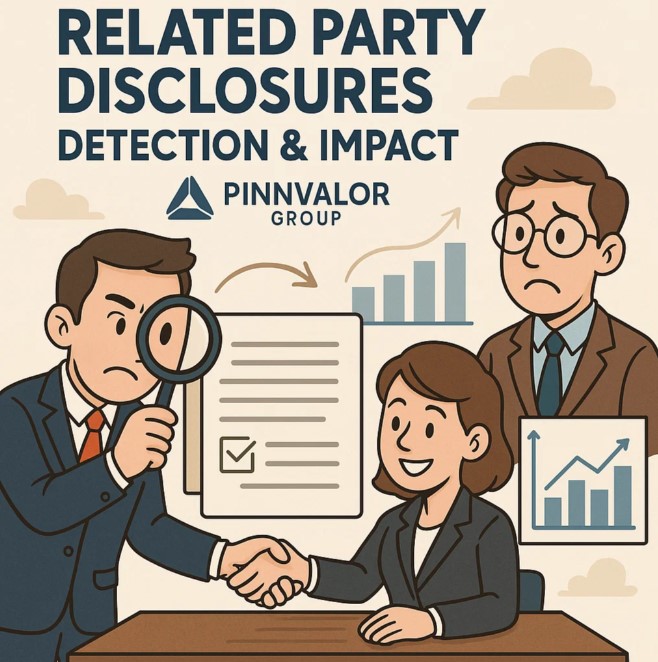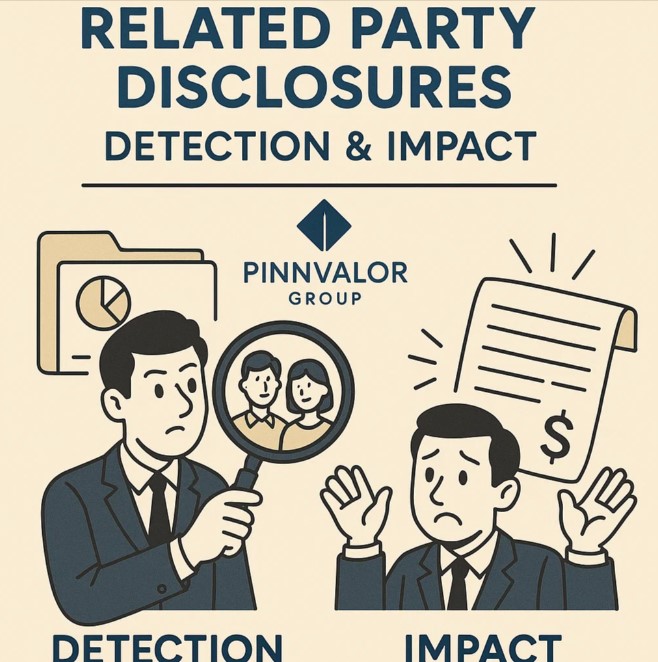
Related Party Disclosures – Detection & Impact
In today’s increasingly regulated business environment, transparency in financial reporting has never been more critical. Among the many areas where scrutiny is high, related party disclosures stand out due to their potential to conceal unethical or fraudulent practices. Whether you're a corporate executive, investor, or auditor, understanding the detection and impact of related party disclosures is essential to maintaining trust and compliance.
Could hidden relationships in your company’s financials be putting your reputation—and compliance—at risk?
Hidden related party transactions can quietly erode trust, compliance, and credibility. Shine a light before the damage is done.
What Are Related Party Disclosures?
Related party disclosures refer to the mandatory reporting of transactions and relationships between an entity and its related parties. A related party can include:
- Subsidiaries and parent companies
- Key management personnel (KMP)
- Immediate family members of executives
- Entities under common control
- Joint ventures or associates
The objective of these disclosures is to ensure that users of financial statements are aware of the relationships that might affect the company’s financial position or performance.
Why Are Related Party Disclosures Important?
- Transparency & Accountability: Helps stakeholders understand the nature and extent of relationships that may not be conducted at arm’s length.
- Fraud Detection & Prevention: Many corporate scandals—such as Enron and Satyam—were rooted in undisclosed or poorly managed related party transactions.
- Regulatory Compliance: Disclosure is mandated under various accounting standards (e.g., IAS 24, ASC 850, Ind AS 24).
- Investor Confidence: Full disclosure plays a pivotal role in building investor trust and governance confidence.
Detection of Related Party Transactions
1. Review of Corporate Structure
Examine the organizational chart to identify subsidiaries, associates, and joint ventures. Analyze ownership percentages and voting rights.
2. Board Minutes & Contracts
Scrutinize board meeting minutes for approvals or discussions of related party deals. Review significant contracts and arrangements.
3. Intercompany Account Analysis
Look for unusual or recurring transactions between entities. Examine terms to see if they differ from market conditions.
4. Employee and Management Declarations
Enforce annual conflict of interest declarations. Use employee disclosures to track relationships not evident on paper.
5. Auditor Procedures
External auditors perform risk assessment procedures to detect undisclosed related party transactions. Techniques include matching tax filings, bank records, and third-party confirmations.

Red Flags and Risk Indicators
- Transactions at significantly above or below market prices
- Recurring losses in transactions with specific parties
- Loans with no repayment terms or security
- Non-disclosure of known relationships
- Complex ownership structures
Impact of Related Party Disclosures
1. Financial Impact
Misstated earnings or assets due to improper recognition or valuation. Potential restatements that can damage market credibility.
2. Reputational Risk
Negative media coverage and investor distrust. Impact on share price and market valuation.
3. Regulatory & Legal Consequences
Penalties and fines from regulatory bodies. Legal action against directors and executives for nondisclosure or misrepresentation.
4. Audit and Compliance Costs
Increased audit scope and procedures. Internal investigation costs in the case of whistleblower complaints or regulatory scrutiny.
Best Practices for Managing Related Party Disclosures
- Robust Internal Controls: Track and approve related party transactions through proper governance channels.
- Clear Disclosure Policies: Define related parties and mandate timely declarations by employees and directors.
- Audit Committee Oversight: Provide independent oversight of related party transactions.
- Use of Technology: Employ compliance tools and ERP systems to flag unusual transactions or relationships.
Conclusion
While related party transactions are not inherently problematic, lack of transparency around them can lead to significant financial, legal, and reputational harm. Organizations must adopt a proactive approach to identify, document, and disclose these relationships in accordance with applicable accounting standards and legal requirements.
